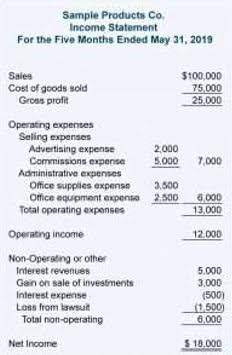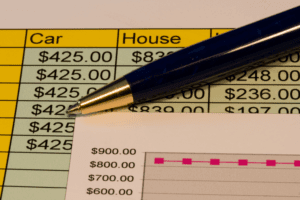
A company’s management team tracks the average inventory period to monitor its inventory management and ensure orders are placed based on customer purchasing patterns and sales trends. inventory accounting It can help assess turnover rates, liquidity, and inventory management efficiency. Companies calculate average inventory by assigning a dollar value to the inventory it averages.
How to Interpret Average Inventory Period
Following the last-in, first-out method, the first 50 necklaces would be assigned the cost of $30, while the following 100 necklaces sold would be priced at $25. Say Robert runs a jewellery shop and uses the LIFO costing method to manage his stock. Later, he chooses to buy another 50 silver necklaces, but this time, the price has gone up to $30 per item. If Mary were to buy 50 wine glasses at $12 each, and then order another 50 wine glasses but this time, paying $16 each, she would assign the cost of the first wine glass as resold at $12. Once 50 wine glasses are sold, the next 50 glasses are set at the $16 value, no matter the additional stock purchased within that time.
Average Inventory Period Calculation Example

Many companies will opt to use the FIFO stock method to offload their older stock first. As a result, the calculations for a stock’s cost of sales will reflect the movement and value of the goods. This stock accounting method is one most often used by businesses, especially ones with perishable inventories. Businesses that sell products to customers have to deal with inventory, which is either bought from a separate manufacturer or produced by the company itself.
- Now that we have a clear understanding of how to determine the beginning and ending inventory, let’s move on to the calculation of average inventory.
- When you do the math, you see that the cost for each unit in your inventory has jumped from $0.958 to an even $1.
- Average stock, or average inventory, is equal to stock at the beginning of the period plus stock at the end of the period divided by two.
- It means that, on average, the value stored in the supermarket warehouse in January 2019 was $10,000.
- Therefore, you may use this formula to determine how much inventory you ought to have on hand if you’re already figuring out your EOQ.
- By using these formulas in your business, you can maintain an ongoing record of your inventory.
- You won’t have any prior accounting periods to look to if you’re beginning a new business.
Average Cost Method Formula

Take your learning and productivity to the next level with our Premium Templates. Access and download collection of free Templates to help power your productivity and performance. That way, you’re making a profit no matter how much you had to pay for the latest shipment of goods.
How is stock classified in accounting?
The average inventory is the mean value (that can be different from the median value) of an inventory during a determined period of time. For the weighted average, you average all of the inventory you purchased during a period of time, and assign a value to your remaining inventory based on the average. If your company has a goal to keep $6,000 worth of product on hand so you don’t run out, you can see that you need to order a bit more.
Average Inventory: Average Inventory Formula and Cost
Get instant access to video lessons taught by experienced investment bankers. Learn financial statement modeling, DCF, M&A, LBO, Comps and Excel shortcuts. The net change in inventories during Year 0 was zero, as the reductions were offset by the purchases of new raw materials. The operating assumptions in a financial model will be set based on the historical trends of the company’s days inventory outstanding (DIO) to guide the pro-forma forecast. Generally speaking, the four different types of inventories are raw materials, work-in-progress (WIP), finished goods (available for sale), and maintenance, repair, and operating supplies (MRO).

A high inventory turnover rate indicates efficient inventory management, as it implies that products are being sold quickly and that the company is not holding excessive inventory. On the other hand, a low inventory turnover rate may suggest that a business is facing challenges in selling its products or managing its inventory efficiently. The calculation of average inventory involves taking into account the beginning inventory, ending inventory, and any changes in inventory levels during the specified period. By calculating the average inventory, we can gain insights into how effectively a company manages its inventory and determine its inventory turnover rate. Average cost method uses a simple average of all similar items in inventory, regardless of purchase date, followed by a count of final inventory items at the end of an accounting period.
- The inventory turnover ratio measures how often a company has sold and replaced its inventories in a specified period, i.e. the number of times inventories were “turned over”.
- Following International Financial Reporting Standards (IFRS), a business can determine the appropriate information as required, like corresponding stock accounting numbers.
- Any business’s profit increases as the DSI falls; the lower the DSI, the higher the profits.
- U.S. GAAP allows for last in, first out (LIFO), first in, first out (FIFO), or average cost method of inventory valuation.
- Let’s walk through an example to illustrate how to calculate the average inventory using the formula mentioned earlier.
- Inventory helps in determining the amount of inventory investment needed to support a particular level of sales for the company.
- By tracking average inventory levels and trends, businesses can make better decisions about how much inventory to order and how to allocate their resources.
- It represents the value of inventory that a company carries over into the next period.
- Accounting and stock may seem like two separate yet critical components of any business, but they are linked.
- Additionally, we provided a step-by-step guide on how to calculate average inventory using the formula (Beginning Inventory + Ending Inventory) / 2.
And if you’re careful about its limitations, it can be a valuable part of your inventory management strategy. You can use it to average your company’s inventory for a month, a quarter, or any other time. All you have to do is change the number of data points in the formula and match that number to the one you divide by. Now that we understand the components of a balance sheet, let’s move on to the process of determining the beginning and ending inventory, which are essential for calculating the average inventory. Next, let’s explore the components of a balance sheet, which are essential for calculating average inventory. Learn how to calculate average inventory from a balance sheet and improve your finance understanding.

We’ll break down the components of a balance sheet, explain how to determine the beginning and ending inventories, and provide an illustrative example to help solidify your understanding. Many business owners look to accounting software to help them track and calculate financial information- this also includes stock management and accounting. Millions of individuals and businesses manage stock using QuickBooks as a means to simplify this monumental undertaking.
What’s the Meaning of the Average Inventory Formula
Yes, simply put, all businesses must report their stock to their country’s revenue collection agency. However, revenue collection agencies do not need to know the specific stock items, but rather the costs of sales and net income, which are both calculated using the stock balance. Accounting is the discipline of calculating, processing, and communicating financial information for businesses and individuals.
